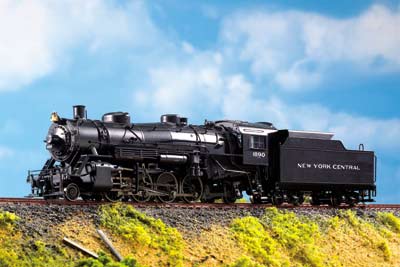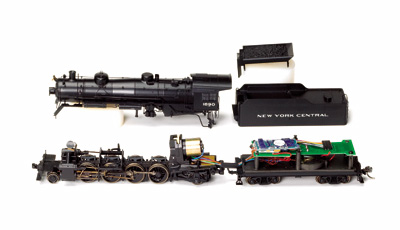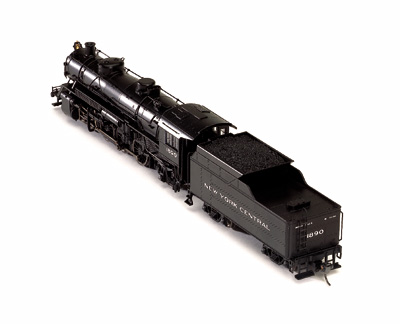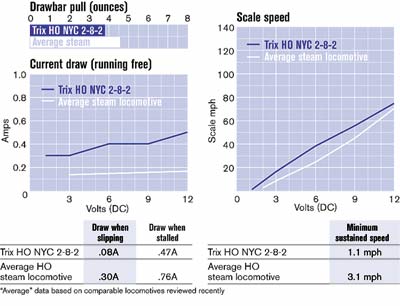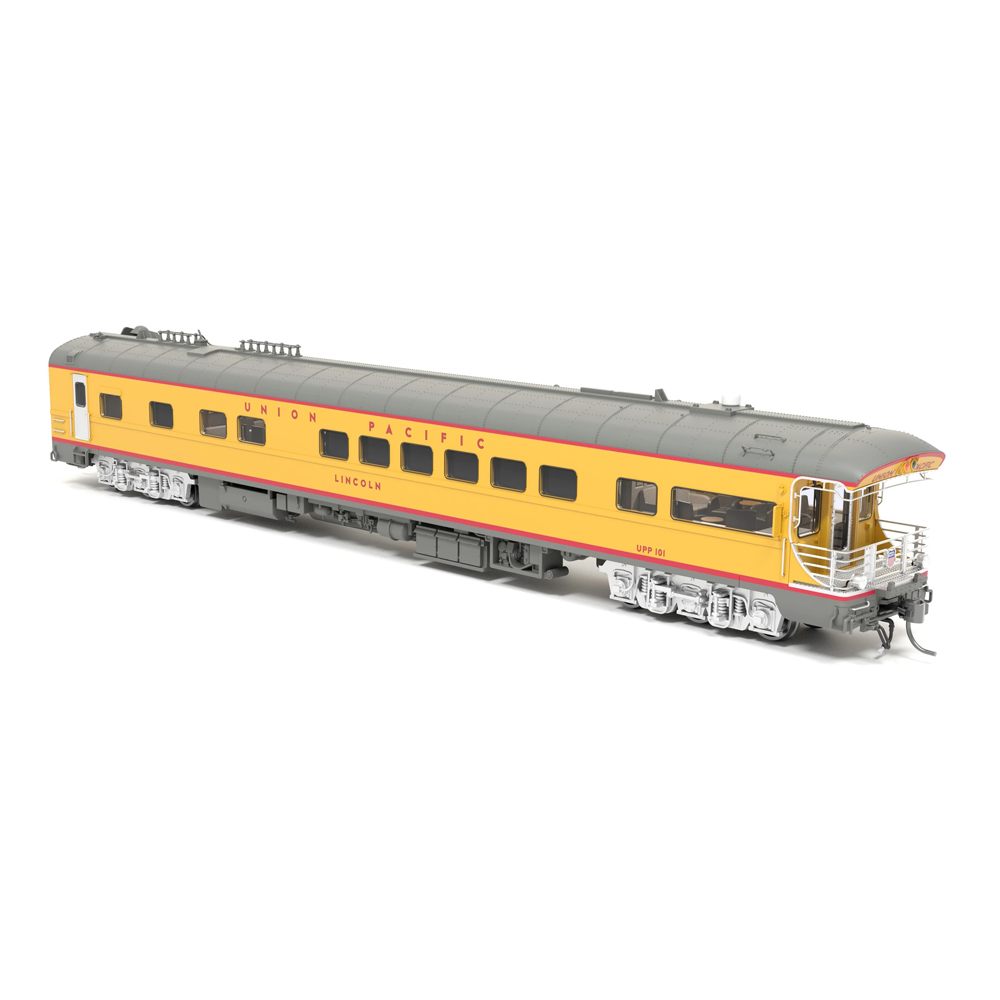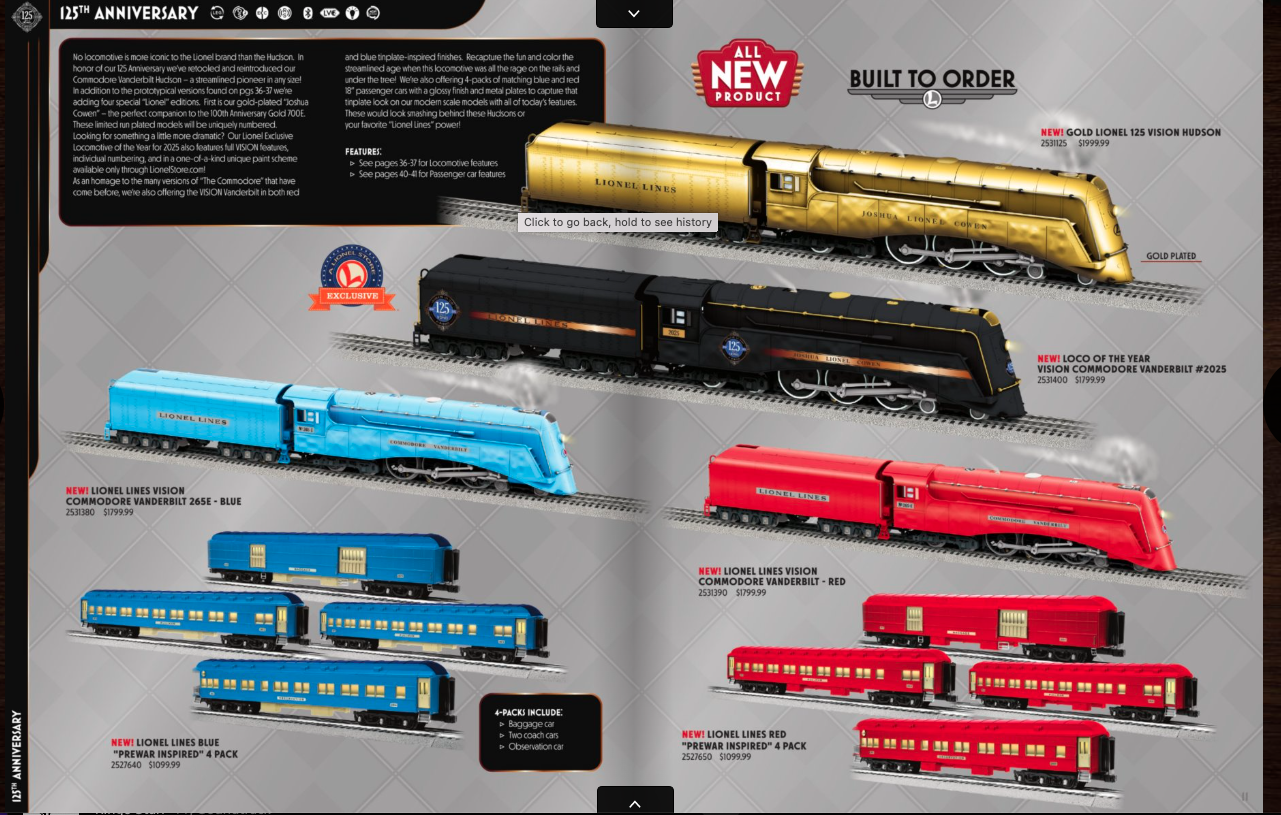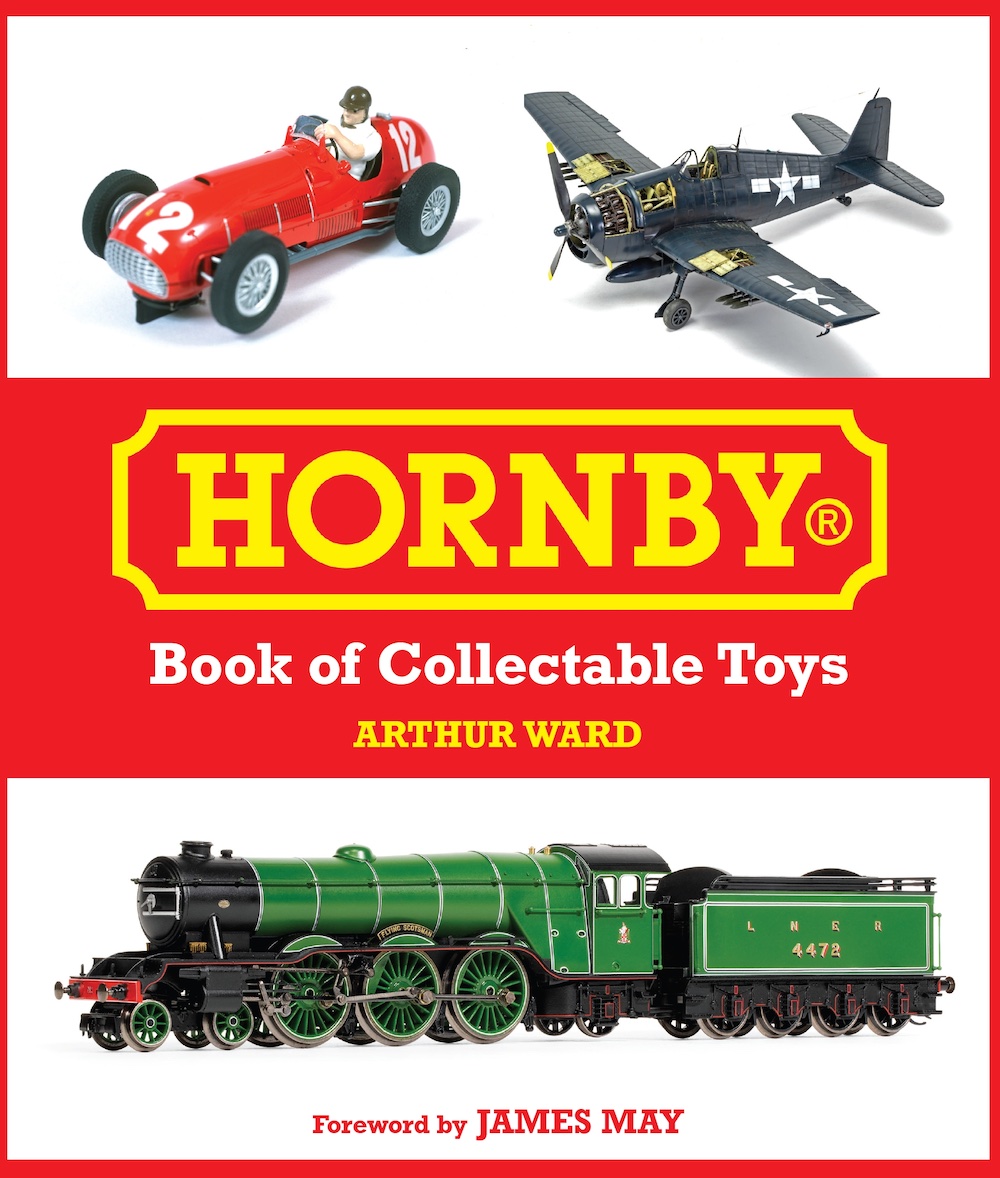The New York Central was best known for its high-performance Hudsons, Niagraras, and Mowhawks, but the majority of its freight trains were hauled by a fleet of more than 1,000 Mikados. Of these, 194 locomotives were United States Railway Administration (USRA) light 2-8-2s, built by Alco, Baldwin, and Lima in 1918 and 1919.
The few molded-on details are extremely crisp. For example, the staybolts are all recognizable as nuts and bolts, not just lumps. The cab and coal pile are styrene, and many of the separate details are cast in a tough, acetal plastic. The cab includes windows, and virtually every detail I found in prototype photos appears on the model. Even the handles for the sandbox lid are separate parts. The only flaw I found is a lack of jacket clamps along the top of the boiler.
The headlight has a yellow light-emitting-diode (LED), and the smokebox is prepped for the installation of a smoke generator.
The black paint was smoothly and evenly applied, and while a few details appear to have been added after painting, they have a similar finish. The lettering is very sharp, but the numbers should be centered on the overall length of the cab side between the window sill and the bottom edge. I was surprised to find the smokebox and firebox painted black when most photos show graphite on these areas. The engine number is correct for 1938-1951; afterward these H-6 locomotives became the 6300 series.
The tender has a telescoping drawbar like the Trix freight cars. All six wheels on the fireman’s side of the locomotive pick up current from one rail, and all four wheels on the engineer’s side of the tender pick up from the other rail.
A small can motor with a bell-shaped armature fits within the normal firebox to leave a realistic space under the boiler. The motor drives an idler gear behind the geared rear axle. Then the rear axle transmits the motion to the other drivers through the siderods.
The gear train uses beveled spur gears instead of the common worm and worm gear. This means it will not bind like a traditional drive, even if energy is being transferred from the wheels to the motor during deceleration or when traveling downgrade. While the gear noise is slightly higher at high speeds, there’s no need for a flywheel.
The tender body shell and frame are metal with a plastic coal bunker that snaps out for access to the two screws that hold it together. The clever drawbar has two positions, and it’s designed to extend slightly on curves.
Except for length, the locomotive is close to exact scale–most measurements are correct or within a few inches of those of the prototype. The driving wheelbase is extended by a foot (placing the lead driver too close to the cylinders), and the locomotive is a foot too long overall.
On DCC, the chuff sounds are good and timed almost perfect. The whistle has a rich tone, but its duration is fixed, so you can’t use it to sound actual railroad signals.
The sound system takes time to reset when power is first applied or the sound is activated, which can be a bit confusing–is the sound on, or off? Operating a DCC with the sound off produces a low buzz at slow speeds. No sounds are generated when operating on DC. Trix recommends using the jumper plug, supplied with the model, to bypass the decoder for DC operation.
The Mikado’s performance compares well with the finest HO diesels. It maintains contact even through complex trackwork. (Watch the pickup shoes on the tender wheels–if they ride too low they can cause shorts on turnouts.)
The Mikdado’s minimum speed is fine for switching, and it’s nearly silent at slow speeds. Some gear whine becomes audible above 50 scale mph, but it’s tolerable.
We were curious about the spur gear drive’s performance on grades. The Mikado easily hauled a nine-car train up a 3-percent grade on our MR&T club layout, and the load-compensation feature of the decoder kept the train under control at a steady speed going downgrade. We were able to stop the train on the downgrade, though not quickly.
The locomotive ran down our 4.5 percent backstage “ramp track” without racing away. But we also found once the throttle (and thus the load compensation) was turned off, the train’s weight shoved the engine to the bottom of the ramp. In other words, the train handling is much like that of a prototype train, so you’ll need to plan ahead if your layout features steep grades.
All things considered, I would give the locomotive itself an A, and the second release could get an A+ if Trix adds the graphite paint and the jacket clamps. I’d give the sound and control system a B.
This is an absolutely lovely locomotive with extraordinary detail. Even though the sound package isn’t perfect, I’d still give the Trix Mikado an excellent rating overall.
Price: $595.00
Manufacturer:
Trix Trains
P.O. Box 510559.
New Berlin, WI 53151
Description:
Die-cast metal ready-to-run steam locomotive and tender
Features:
Automatic dual-mode Digital
Command Control (DCC)
decoder with sound
Die-cast metal construction
Directional constant
light-emitting diode (LED)
headlight
Drawbar pull: 3.78 ounces
(60 free-rolling freight cars on
straight and level track)
Engine and tender weight: 23.5
ounces, engine alone is 17
ounces
High-efficiency motor
Minimum radius: 18″
RP-25 contour wheels (in gauge)
Road Names:
New York Central (nos. 1890 and 1883), Pennsylvania RR, and Union Pacific





